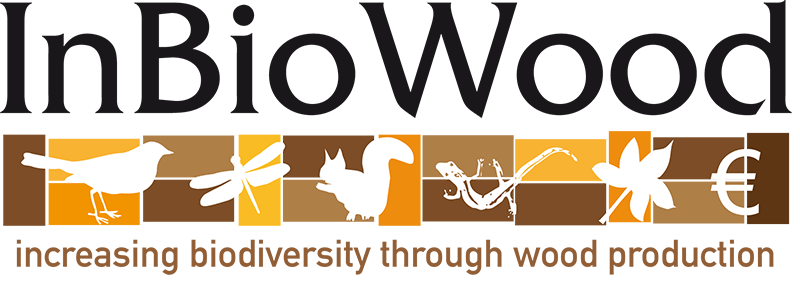InBioWood - Increase Biodiversity through Wood Production
LIFE12 ENV/IT/000153

Object
Tree farming plantations with dual function, both productive and environmental in heavily populated rural areas.
Objective
Potentially Permanent Polycyclic Plantations (3P Plantations) combine 2 or more production cycles of different lengths on the same plot of land and pursue several objectives:
- produce valuable wood and biomass;
- increase biodiversity;
- mitigate the climate;
- reduce pollutants in waterways,
- defend the river banks from erosion;
- redevelop the landscape.
The areas where the good practice wad implemented represent examples of sustainable tree farming models, with particular interest to the increase of biodiversity in rural areas, characterised by intensive agricultural activities.
Good Practice Description
The 3P plantations are plants that combine 2 or more production cycles of different lengths in the same plot of land. Experimentation has shown that it is possible to cultivate plants on the same surface at the same time:
- very short cycle (6-7 years) to produce woody biomass;
- short cycle (8-12 years), such as poplar to produce peeled wood;
- medium-long cycle (20-45 years), such as walnut, cherry, ash, rowan or oak to produce sliced and/or sawn assortments.
In the design phase, each plant must be assigned the right space according to the role it has to play. The LIFE + InBioWood Project envisaged the construction of 25 hectares of Potentially Permanent Open Field Polycyclic Plantations of different complexity in terms of length of production cycles, number of tree and shrub species used, distances between plants.
For the evaluation of open field plants, monitoring was applied through a "quality index" (QI), an absolute number, between 0 and 100, which shows to what extent a plantation is developing over time and with the characteristics expected.
Territorial Context
The plantations were developed in a watershed located within the area of the Great Veronese Valleys, in particular along the Tartaro and Tione delle Valli rivers. Here the structure of the landscape is determined by the fluvial and hydrological network, by arable lands intensively used, interrupted only by sporadic orchards or rows of poplars or willows.
Replicability conditions
The development of 3P plantations can be replicated anywhere but specific knowledge is required both on design and management phases. One of the main aims of the project is precisely to provide operators and technicians with tools and materials to learn about the design, implementation and management methods of this type of plantation.
Dissemination material
From the LIFE GoProFor database, in the final part of the sheet, it is possible to download some material relating to the project, including the technical report entitled: "Design, development and management of Naturalistic Polycyclic Wood Plantations" in Italian and English.


